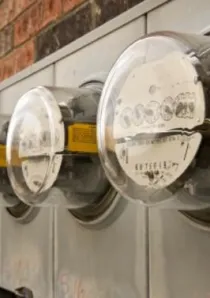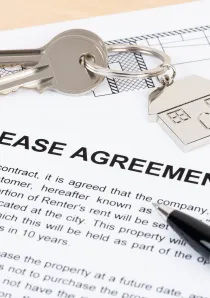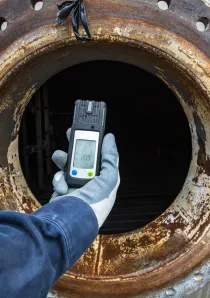The steps below outline practical actions you can take right away, and each action helps extend the life of your equipment while lowering bills. Taken together, these simple efficiency tweaks can make a noticeable difference for both your building and the people who live or work in it.
1. Close All the Windows.
It sounds almost too simple, but this one is all too easy to overlook. Even a window cracked open by half an inch can waste an enormous amount of heat. The Department of Energy estimates that air leakage accounts for 25–40% of heating and cooling energy use in typical buildings. That means every drafty window is like burning fuel straight into the outdoors. A quick annual check to confirm that every apartment’s windows shut tightly — and resealing or caulking where needed — can prevent those leaks. Over the course of a winter, this basic step can save thousands of dollars and keep tenants far more comfortable.
2. Remove or Seal Window A/Cs.
Many building operators think it’s the tenant’s responsibility to take care of their A/C unit in the winter, but relying on them can be a costly mistake. Room air conditioners are one of the biggest hidden sources of winter heat loss. Research from the Urban Green Council found that a single window A/C left in place can leak as much air as a 6-square-inch hole in the wall.
Whenever possible, remove the units completely before the heating season begins. If that isn’t realistic, investing in high-R insulation covers ($40–60 each) is a smart alternative. Properly sealed, these units stop the worst leaks and quickly pay for themselves in reduced fuel use.
3. Inspect Radiator Valves.
Valves that are closed, stuck, or broken create a ripple effect across the heating system. When one unit isn’t warming up because its valve is faulty, the boiler often gets cranked up to compensate — overheating the rest of the building in the process. That wasted heat translates directly into wasted money.
A thorough valve inspection before the season starts is quick, inexpensive, and plain effective. Replacing or repairing faulty valves keeps heat balanced across the building, reduces system strain, and cuts down on complaints from residents.
4. Check for Obstructions.
Radiators need clear space to function properly. When they’re blocked by furniture, hidden behind heavy curtains, or clogged with dust and debris, heat circulation drops dramatically. The result? Cold spots in individual units and an operator tempted to raise the building-wide setpoint to make up for it.
Instead of burning extra fuel, assess every unit to ensure radiators are unobstructed and clean. Something as simple as repositioning a couch or clearing away clutter can restore efficiency and save energy without any mechanical work at all.
5. Check to See That Radiator Air Vents are Working.
In steam systems, air vents do the critical job of letting air escape so steam can flow into radiators. When vents are painted over, clogged, or broken, radiators won’t heat evenly — and the system ends up working much harder than it should.
This is a widespread issue in multifamily buildings, but it’s also one of the easiest to fix. Research from NREL’s Building America program shows that replacing main and radiator vents can lower heating costs by 5–10%. A seasonal vent inspection is one of the highest-value tasks a building team can take on.
6. Conduct Annual Apartment Checks with Smart Support.
Even a simple once-a-year walkthrough of each unit can uncover problems like stuck valves, broken vents, blocked radiators, or cracked windows before they balloon into system-wide inefficiencies. These inspections don’t need to be complicated or time-consuming — just consistent.
For larger portfolios, smart temperature sensors can make the job even easier. They quickly highlight “problem apartments” where heat is uneven or the system is overworking, reducing the need to inspect every unit in person. A combined strategy of basic physical checks plus targeted sensor monitoring ensures heating systems run smoothly all season long.
The Bottom Line
A little preparation now goes a long way once the temperature drops. By closing gaps, fixing small issues, and giving your heating system the support it needs, you’ll cut waste, lower costs, and keep tenants far more comfortable through the winter. The key is consistency — making these checks part of your annual routine ensures your building runs efficiently year after year.




